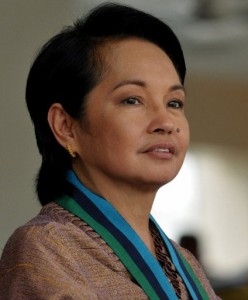Arroyo has best growth in full term; Aquino tops 1st year growth among presidents – NSCB
MANILA, Philippines — Among the Philippine leaders from 1986 to present, President Benigno Aquino III posted the fastest growth in his first year in office while President Gloria Macapagal-Arroyo posted the best average economic performance among those who completed their respective terms, the National Statistical Coordination Board (NSCB).
In a report published Monday, the NSCB noted that such observations were based on gross domestic product (GDP) growth, influenced by external factors such as regional and global financial crises as well as the political climate at the time of each presidency. As such, the NSCB said, GDP growth could not be fully attributed to a certain president or his/her economic team.
The term of President Joseph “Erap” Ejercito Estrada was short-lived and Aquino is only in his tenth quarter of service. “If we focus on the three Presidents that completed their terms of office, (President Cory Aquino, President Fidel “FVR” V. Ramos, and Arroyo) we would observe that the domestic economy performed best during the time of President [Arroyo],” NSCB secretary-general Jose Ramon G. Albert said.
During her term, Albert said, the GDP average annualized growth rate hit 4.1 percent, mainly driven by the services sector.
The NSCB data showed that the highest GDP annual growth rate in Arroyo’s term was recorded in 2004 with 6.7 percent while the lowest was posted in
2009 with 1.1 percent. Services had an average growth of 4.9 percent.
The services sector hit a high of 8.3 percent in 2004 while the lowest was only 3.4 percent registered in 2009. Industry contributed an average growth of 3.3 percent. The highest growth rate for industry was posted in 2007 with 5.8 percent and the lowest was a contraction by 1.9 percent registered in 2009. Agriculture, Hunting, Forestry and Fishing (AHFF) posted an average growth of 2.8 percent. The highest growth rate for the sector was 4.7 percent posted in 2007 while the lowest was a contraction by 0.7 percent in 2009.
On the other hand, during President Cory Aquino’s term, the economy averaged only 2.8 percent with the services sector contributing an average growth of 3.5 percent; industry, 2.6 percent; and AHFF, 1.5 percent. It should be noted, however, that she led amid the volatile, post-Martial Law political environment. The highest GDP growth rate during Cory’s time was recorded in 1988 at 6.8 percent while the lowest was negative 0.6 posted in 1991. The highest growth rate recorded by the services sectors was 6.9 percent in 1988 while the lowest was 0.2 percent in 1991. Industry’s peak was in 1988 at 8.4 percent while the ebb was negative 2.6 percent. AHFF, on the other hand, had a recorded high of only 3.7 percent in 1986 and the lowest at 0.2 percent in 1990.
To include Estrada and Aquino, NSCB said, it might be interesting to look at the performance of the economy in the first eight quarters of service of each president of the Fifth Republic. That is, to see who of them is “the fairest of them all,” Albert said.
Among the Philippine presidents from 1986 to present, Aquino got the highest GDP growth rate in his first year of presidency with 5.4 percent while Estrada got the lowest with 0.1 percent, Albert said. It should be noted, however, that Estrada’s first year as president was in the aftermath of the effects of the Asian Financial Crisis.
Aquino also got the highest GDP growth rate in his second year of service with 4.9 percent, while Ramos got the lowest with 3.4 percent (Ramos had to deal with a power crisis during that time).
“With regard to our two lady presidents who were catapulted to power via popular uprisings, the domestic economy of Cory and Arroyo both accelerated in their second year with 4.3 percent from 3.4 percent and 3.6 percent from 2.9 percent, respectively,” Albert said.
Comparing specific major sectors of the economy, Albert observed that Aquino got the highest growth rates for the services sector in his first year with 5.8 percent and accelerated to 6.7 percent in his second year. Cory followed with 4.2 percent and 5.1 percent in her first and second year, respectively. Ramos got the lowest with 1.6 percent in his first year and 3.4 percent in his second year, respectively.
Aquino topped the industry sector in his first year of service with 5.3 percent while Estrada’s industry growth rate contracted by 4.5 percent. In the second year, Ramos was at the top with 4.3 percent while Arroyo was the tail ender with 2.9 percent.
Aquino got the highest growth rate for AHFF in his first year with 3.7 percent while Erap got only 1.6 percent growth rate. In their second year, Estrada rebounded with 5.6 percent while PNoy Aquino got only a measly growth of 0.1 percent.
If the presidents of the Fifth Republic were to compare their first nine quarters of service, Aquino would be ahead with 4.5 percent annualized rate of GDP while Ramos would be the lowest with 3.4 percent. In AHFF, Estrada tallied highest with 6.9 percent while Cory got the lowest with 1.1 percent. For industry, Cory Aquino got the highest rate with 4 percent while Arroyo got the lowest rate with 2.5 percent; and, for the services sector, Aquino got the highest with 5.4 percent while Ramos got the lowest with 3.3 percent.
In broad terms, an increase in GDP is one indication that the economy is doing well, according to the NSCB. “Consequently, some analysts suggest that the changes in GDP mirror how Philippine presidents and their economic managers manage our economy. Of course, other analysts would think that this may be far too simplistic given that the starting conditions and other factors, including the external environment, were not the same across the periods of these presidents,” Albert said.















